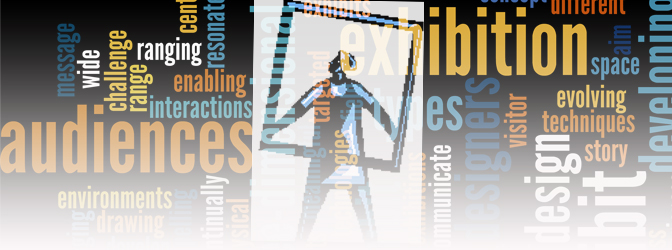You’re the Curator: Creating a Historical Exhibit Using Multiple Literacies
The last session I attended at the 2014 NCSS Conference was led by Mira Cohen, Director of Education at the Ronald Reagan Presidential Library & Museum, and Maureen Lorimer, Ph.D., Assistant Professor of Education in the Graduate School of Education at California Lutheran University. Cohen and Lorimer have partnered together on professional development projects aimed at promoting critical thinking by engaging students with visual and performing arts. In their session “Your the Curator: Creating a Historical Exhibit Using Multiple Literacies,” Cohen and Lorimer shared how to engage teachers and students in creating online and classroom exhibits based on historical themes.
The basic idea is simple; provide students with primary sources from collections at institutions like the Ronald Reagan Presidential Library & Museum and let them take on the role of museum curator. In the process of designing a historical exhibit, students draw on knowledge and skills from multiple disciplines and develop a finished product that can be shared with their peers and other community audiences. Below are some of the steps teachers can take to implement “You’re the Curator” as suggested by Cohen and Lorimer during their NCSS session.
Implementing You’re the Curator
- Design Your Activity: Design your “You’re the Curator” with the end in mind. For their partnership, Cohen and Lorimer used the Understanding by Design method. Part Understanding by Design requires the development of essential questions. In the activity modeled during the session, the essential questions served as the historical theme for student-made exhibits. Learn more about essential questions from ASCD.
- Select Primary Sources: Teachers may wish to provide a selection of primary sources related to the theme for students to choose from for their exhibits. Students could supplement teacher provided primary sources with their own research. Looking for primary sources from Georgia? Use the GHS educator web guide to find primary and secondary sources to support your activity.
- Support Analysis of Primary Sources: Museum exhibits tell stories. In order to properly tell a story, students will need to understand each primary source included in their exhibit. There are several tools available to support primary source analysis. Lorimer suggested using a process called “Visual Scanning.” In this strategy, students are asked to scan the primary sources for approximately 60 seconds. After the initial scanning, students are asked “What do you notice?” The teacher then facilitates discussion using probing questions. Cohen suggested using Document analysis Worksheets provided by the National Archives and Records Administration to support extended detailed analysis of the primary sources.
- Provide Exhibit Guidelines and Materials: It is important to provide clear guidelines and expectations for the exhibits. What do they need to include in their exhibit? What aspects of the exhibit will be evaluated for a grade? What materials are necessary to construct the exhibit? Teachers can provide a series of questions for students to answer to help facilitate the design process. What is the story you want to tell? What primary sources will you use to tell the story? Who is your audience? How will you prepare the space? How will you introduce the exhibit? What key points must be shared during a docent-led tour?
Schools Making News with Student Exhibits:
- Storytelling takes high-tech twist in Hinckley Elementary exhibition at Akron Art Museum. Ann Norman, Sun News
- Craig students honor vets, give oral history a modern twist. Lauren Blair, Craig Daily Press
Additional Links and Resources
